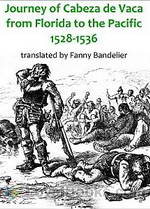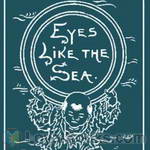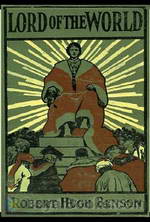|
Books Should Be Free Loyal Books Free Public Domain Audiobooks & eBook Downloads |
|
|
Books Should Be Free Loyal Books Free Public Domain Audiobooks & eBook Downloads |
|
Top Authors |
|---|
|
Book type:
Sort by:
|
By: Nennius | |
|---|---|
 History of the Britons (Historia Brittonum)
History of the Britons (Historia Brittonum)
Although the origin of this book is much debated it remains, perhaps, one of the earliest recorded histories of Britain. It was believed that Nennius wrote the book around 796AD. If indeed he wrote this record, Nennius is recognised as being a teller, and embellisher, of historic characters and events.This book remains notable however, as one of the earliest that mention Arthur (The King of Arthurian legend). | |
By: Donald Alexander Mackenzie (1873-1936) | |
|---|---|
 Myths and Legends: Myths of Babylonia and Assyria
Myths and Legends: Myths of Babylonia and Assyria
Donald Alexander Mackenzie was a Scottish journalist and prolific writer on religion, mythology and anthropology in the early 20th century. His works included Indian Myth and Legend, Celtic Folklore and Myths of China and Japan.As well as writing books, articles and poems, he often gave lectures, and also broadcast talks on Celtic mythology.This volume deals with the myths and legends of Babylonia and Assyria, and as these reflect the civilization in which they developed, a historical narrative has been provided, beginning with the early Sumerian Age and concluding with the periods of the Persian and Grecian Empires... | |
 Elves and Heroes
Elves and Heroes
This volume describes, in verse, the mythical creatures and people of ancient Scotland. It also includes explanatory notes about about the characters and folk tales that inspired the author's poetry. (Introduction by Matthew Reece) | |
By: Lagerlöf, Selma (1858-1940) | |
|---|---|
 The Treasure
The Treasure
Selma Lagerlöf was born in Vaermland, Sweden, in 1858 and enjoyed a long and very successful career as a writer, receiving the Nobel-Prize in Literature in 1909. She died in Vaermland in 1940. The Treasure (Herr Arnes penningar) is a fairly short Novel, both a Drama and a Ghost Story. Published in 1904 and the English translation in 1923. The story is set in Bohuslaen on the West coast of Sweden in the middle of the 16th Century. Herr Arne, the old Parson in Solberga and all his household are brutally murdered, and his great Treasure stolen... | |
By: Richard Harris Barham (1788-1845) | |
|---|---|
 The Ingoldsby Legends, 1st Series
The Ingoldsby Legends, 1st Series
The Ingoldsby Legends are a collection of myths, legends, ghost stories and poetry supposedly written by Thomas Ingoldsby of Tappington Manor, actually a pen-name of Richard Harris Barham.The legends were first printed in 1837 as a regular series in Bentley's Miscellany and later in New Monthly Magazine. The legends were illustrated by John Leech and George Cruikshank. They proved immensely popular and were compiled into books published in 1840, 1842 and 1847 by Richard Bentley. They remained popular through the Victorian era but have since fallen out of fame. An omnibus edition appeared in 1879: The Ingoldsby Legends; or Mirth and marvels. | |
By: Madame de La Fayette (1634-1693) | |
|---|---|
 The Princess of Cleves
The Princess of Cleves
| |
 The Princess De Montpensier
The Princess De Montpensier
| |
By: Alvar Núñez Cabeza de Vaca (ca. 1490/1507 - ca.1557/1579) | |
|---|---|
 The Journey of Alvar Núñez Cabeza de Vaca
The Journey of Alvar Núñez Cabeza de Vaca
Few stories of shipwreck and survival can equal that of the 16th century Spaniard Alvar Núñez Cabeza de Vaca who, cast ashore near present day (USA) Tampa Bay, Florida, in 1528, survived eight years of hand-to-mouth existence among the Indians of the South and Southwest, and who walked on foot across the plains to the Pacific Coast, arriving in Mexico in 1536. In 1542 he published an account of his adventures, and the present reading is based on Fanny Bandelier’s English translation of that text... | |
By: Poul William Anderson (1926-2001) | |
|---|---|
 The Valor of Cappen Varra
The Valor of Cappen Varra
| |
 Duel on Syrtis
Duel on Syrtis
| |
By: Baron Paul Henri Thiry d'Holbach (1723-1789) | |
|---|---|
 Good Sense
Good Sense
In 1770, Baron D'Holbach published his masterpiece, "Systeme de la Nature", which for a long time passed as the posthumous work of M. de Mirabaud. That text-book of "Atheistical Philosophy" caused a great sensation, and two years later, 1772, the Baron published this excellent abridgment of it, freed from arbitrary ideas; and by its clearness of expression, facility, and precision of style, rendered it most suitable for the average student. This text is based on an undated English translation of "Le Bon Sens" published c. 1900. The name of the translator was not stated. | |
By: Azel Ames (1845-1908) | |
|---|---|
 The Mayflower and Her Log; July 15, 1620-May 6, 1621
The Mayflower and Her Log; July 15, 1620-May 6, 1621
| |
By: Alfred, Lord Tennyson (1809-1892) | |
|---|---|
 Idylls of the King
Idylls of the King
Idylls of the King, published between 1856 and 1885, is a cycle of twelve narrative poems by the English poet Alfred, Lord Tennyson which retells the legend of King Arthur, his knights, his love for Guinevere and her tragic betrayal of him, and the rise and fall of Arthur's kingdom. The whole work recounts Arthur's attempt and failure to lift up mankind and create a perfect kingdom, from his coming to power to his death at the hands of the traitor Mordred. Individual poems detail the deeds of various knights, including Lancelot, Geraint, Galahad, and Balin and Balan, and also Merlin and the Lady of the Lake. | |
 The Princess
The Princess
The Princess is a serio-comic blank verse narrative poem, written by Alfred Tennyson, published in 1847. The poem tells the story of an heroic princess who forswears the world of men and founds a women's university where men are forbidden to enter. The prince to whom she was betrothed in infancy enters the university with two friends, disguised as women students. They are discovered and flee, but eventually they fight a battle for the princess's hand. | |
By: Alfred Tennyson Tennyson (1809-1892) | |
|---|---|
 Becket and other plays
Becket and other plays
| |
 Lady Clare
Lady Clare
| |
 The Last Tournament
The Last Tournament
| |
 Queen Mary and Harold
Queen Mary and Harold
| |
By: T. H. Pardo de Tavera (1857-1925) | |
|---|---|
 The Medicinal Plants of the Philippines
The Medicinal Plants of the Philippines
| |
 The Legacy of Ignorantism
The Legacy of Ignorantism
| |
By: Glenn D. Bradley (1884-1930) | |
|---|---|
 The Story of the Pony Express
The Story of the Pony Express
The Story of the Pony Express offers an in depth account behind the need for a mail route to connect the eastern U.S. with the rapidly populating west coast following the gold rush of California, the springing up of lumber camps, and all incidental needs arising from the settling of the western frontier. Here we learn of the inception of the Pony Express, its formation, successes, failures, facts, statistics, combined with many anecdotes and names of the people who were an integral part of this incredible entity which lasted but less than two years, yet was instrumental in the successful settlement of two thirds of the land mass comprising the expanding country... | |
By: Mór Jókai (1825-1904) | |
|---|---|
 Eyes Like the Sea
Eyes Like the Sea
He was a painter, a poet, a novelist. He lived during the Hungarian revolution and his love of freedom meant his life was often in peril. She was his first love, this girl with the eyes like the sea. She was at heart noble, good and loving. What an excellent lady might have been made out of this woman, if she had only met with a husband who, in the most ordinary acceptance of the word, had been a good fellow, as is really the case with about nine men out of every ten. But she always managed to draw the unlucky tenth out of the urn of destiny... | |
 'Midst the Wild Carpathians
'Midst the Wild Carpathians
| |
 Tales from Jókai
Tales from Jókai
Móric Jókay de Ásva, known as Mór Jókai or Maurus Jokai, was a Hungarian dramatist and novelist. He was a very prolific writer from an early age and wrote hundreds of novels, novellas, and short stories in his lifetime. The nine stories in this selection tell about hard times in Eastern Europe, especially in Hungary (Jokai was involved in the Hungarian uprising of 1848), as well as of ancient superstitions and folk lore. In the novella "The City of the Beast", Jokai gives his version of the sinking of Atlantis. | |
 Black Diamonds
Black Diamonds
| |
 The Golden Age in Transylvania
The Golden Age in Transylvania
| |
 Halil the Pedlar A Tale of Old Stambul
Halil the Pedlar A Tale of Old Stambul
| |
 Manasseh A Romance of Transylvania
Manasseh A Romance of Transylvania
| |
 The Lion of Janina The Last Days of the Janissaries
The Lion of Janina The Last Days of the Janissaries
| |
 Timar's Two Worlds
Timar's Two Worlds
| |
 In Love With the Czarina and Other Stories
In Love With the Czarina and Other Stories
| |
 A Hungarian Nabob
A Hungarian Nabob
| |
 The Day of Wrath
The Day of Wrath
| |
 The Nameless Castle
The Nameless Castle
| |
 The Green Book Freedom Under the Snow
The Green Book Freedom Under the Snow
| |
 The Yellow Rose
The Yellow Rose
| |
 The Baron's Sons
The Baron's Sons
| |
 Debts of Honor
Debts of Honor
| |
 The Corsair King
The Corsair King
| |
 Told by the Death's Head A Romantic Tale
Told by the Death's Head A Romantic Tale
| |
 Hungarian Sketches in Peace and War Constable's Miscellany of Foreign Literature, vol. 1
Hungarian Sketches in Peace and War Constable's Miscellany of Foreign Literature, vol. 1
| |
 The Poor Plutocrats
The Poor Plutocrats
| |
 Pretty Michal
Pretty Michal
| |
 The Strange Story of Rab Ráby
The Strange Story of Rab Ráby
| |
 A Christian But a Roman
A Christian But a Roman
| |
 Dr. Dumany's Wife
Dr. Dumany's Wife
| |
 Peter the Priest
Peter the Priest
| |
By: Allan Pinkerton (1819-1884) | |
|---|---|
 The Expressman and the Detective
The Expressman and the Detective
Allan Pinkerton (1819-1884), a Scotsman by birth and a barrel-maker by trade, settled in Chicago in its infancy and founded the Pinkertons, the world's first detective agency. Though events associated with the agency after his death have tarnished the name, Pinkerton himself was one of the original human rights advocates. He was a dear friend to John Brown, an advisor to Abraham Lincoln, and 80 years ahead of his time in hiring female detectives. He was also stubborn, irascible, and an egomaniac... | |
 The Burglar's Fate And The Detectives
The Burglar's Fate And The Detectives
| |
 The Spiritualists and the Detectives
The Spiritualists and the Detectives
| |
 The Somnambulist and the Detective The Murderer and the Fortune Teller
The Somnambulist and the Detective The Murderer and the Fortune Teller
| |
 The Spy of the Rebellion Being a True History of the Spy System of the United States Army during the Late Rebellion,
The Spy of the Rebellion Being a True History of the Spy System of the United States Army during the Late Rebellion,
| |
 Bucholz and the Detectives
Bucholz and the Detectives
| |
 Mississippi Outlaws and the Detectives Don Pedro and the Detectives; Poisoner and the Detectives
Mississippi Outlaws and the Detectives Don Pedro and the Detectives; Poisoner and the Detectives
| |
By: Thomas Lodge | |
|---|---|
 Rosalynde or, Euphues' Golden Legacie
Rosalynde or, Euphues' Golden Legacie
This novel, which Shakespeare adapted in his pastoral comedy As You Like It, is the archetypal pastoral adventure. Two young persons of high birth, who have recently lost their fathers (one to death, one to banishment), fall in love but are separated almost at once and forced to flee to the Forest of Arden. There they meet again, but as Rosalynde is disguised for safety as a boy, named Ganymede, her lover Rosader does not recognize her. Once Rosader has confided his love to Ganymede, they play a game in which the "boy" poses as Rosalynde to give Rosader practice in wooing... | |
By: William Beckford (1760-1844) | |
|---|---|
 The History of the Caliph Vathek
The History of the Caliph Vathek
This is one of the earliest Gothic novels. The Caliph Vathek is one of the wealthiest and most powerful men who ever lived. But this is not enough for him. He seeks also forbidden knowledge, and doesn't care who he has to hurt to get it. Aided by his depraved mother Carathis, Vathek proceeds to damn himself, and those around him. (Introduction by MorganScorpion) | |
By: Jakob Wassermann (1873-1934) | |
|---|---|
 The Goose Man
The Goose Man
| |
By: William Beckford (1759-1844) | |
|---|---|
 Dreams, Waking Thoughts, and Incidents
Dreams, Waking Thoughts, and Incidents
| |
By: Robert Sterling Yard (1861-1945) | |
|---|---|
 The Book of the National Parks
The Book of the National Parks
Robert Sterling Yard (February 1, 1861 – May 17, 1945) was an American writer, journalist, and wilderness activist. Born in Haverstraw, New York, Yard graduated from Princeton University and spent the first twenty years of his career in the editing and publishing business. In 1915, he was recruited by his friend Stephen Mather to help publicize the need for an independent national park agency. Their numerous publications were part of a movement that resulted in legislative support for a National Park Service (NPS) in 1916... | |
By: Gautama Buddha (563-483 BC) | |
|---|---|
 Der Wahrheitpfad (Dhammapadam)
Der Wahrheitpfad (Dhammapadam)
Das Dhammapada ist eine Anthologie von Aussprüchen des Buddha. Dabei sind die Verse so ausgewählt, dass sie den Kern der Lehre des Buddha wiedergeben. Es ist einer der bekanntesten Texte dieser Lehre und findet seine weiteste Verbreitung im südlichen Buddhismus. Dort begleitet es die Schüler des Buddha vom Anfang bis zum Ende ihres Pfades. Darüber hinaus ist es ein Meisterwerk sowohl der frühen buddhistischen Literatur als auch der indischen Tradition des Karvya (Belle Lettre). | |
By: Eddie Rickenbacker (1890-1973) | |
|---|---|
 Fighting the Flying Circus
Fighting the Flying Circus
This is the WWI memoirs of Medal of Honor winner, Capt Eddie Rickenbacker. He fought in and eventually became commander of the 94th "Hat-in-the-Ring" Squadron, which ended the war with the highest number of air victories of any American squadron. The circus mentioned in the title refers to the German squadron commanded by the famous Red Baron, Manfred von Richthofen. (Introduction by Brett W. Downey) | |
By: Robert Hugh Benson (1871-1914) | |
|---|---|
 Lord of the World
Lord of the World
“Mr. Benson sees the world, four or five generations hence, free at last from all minor quarrels, and ranged against itself in two camps, Humanitarianism for those who believe in no divinity but that of man, Catholicism for those who believe in no divinity but that of God.” This apocalyptic novel from the early 1900's is sometimes deemed one of the first modern dystopias. | |
 Come Rack! Come Rope!
Come Rack! Come Rope!
Come Rack! Come Rope! is a historical novel by the English priest and writer Robert Hugh Benson, a convert to Catholicism from Anglicanism. Set in Derbyshire at the time of the Elizabethan persecution of Catholics, when being or harboring a priest was considered treason and was punishable with death, it tells the story of two young lovers who give up their chance of happiness together, choosing instead to face imprisonment and martyrdom, so that "God's will" may be done.The book was written nearly nine years after Benson's reception into the Catholic Church... | |
 Lourdes
Lourdes
| |
 Paradoxes of Catholicism
Paradoxes of Catholicism
| |
 None Other Gods
None Other Gods
| |
 Dawn of All
Dawn of All
In a former book, called "Lord of the World," I attempted to sketch the kind of developments a hundred years hence which, I thought, might reasonably be expected if the present lines of what is called "modern thought" were only prolonged far enough; and I was informed repeatedly that the effect of the book was exceedingly depressing and discouraging to optimistic Christians. In the present book I am attempting -- also in parable form -- not in the least to withdraw anything that I said in the former,... | |
 The King's Achievement
The King's Achievement
| |
 Oddsfish!
Oddsfish!
| |
 The History of Richard Raynal, Solitary
The History of Richard Raynal, Solitary
| |
By: Frank Chouteau Brown | |
|---|---|
 Letters and Lettering A Treatise With 200 Examples
Letters and Lettering A Treatise With 200 Examples
| |
By: Elizabeth Inchbald (1753-1821) | |
|---|---|
 A Simple Story
A Simple Story
The story could really have been simple: Miss Milner, who is admired for her beauty and charm, could have been a socialite, marry a respectable and good looking man and be happy in the standards of her time. But if it was so, why would there be a book? Miss Milner, beautiful and charming as she is, announces her wish to marry her guardian, a catholic priest. But women in the 18th century do not declare their wishes or speak about their passions, and- after all- he is a catholic priest… And if he finds a way to marry her, is this her road to happiness? | |
By: Bahá’u'lláh | |
|---|---|
 The Persian Hidden Words
The Persian Hidden Words
Kalimát-i-Maknúnih or The Hidden Words is a book written in Baghdad around 1857 by Bahá’u'lláh, the founder of the Bahá’í Faith. This work is written partly in Arabic and partly in Persian. The Hidden Words is written in the form of a collection of short utterances, 71 in Arabic and 82 in Persian, in which Bahá’u'lláh claims to have taken the basic essence of certain spiritual truths and written them in brief form. Bahá’ís are advised by `Abdu’l-Bahá, the son of Bahá’u'lláh to read them every day and every night and to implement its latent wisdom into their daily lives... | |
By: Lucius Apuleius | |
|---|---|
 Metamorphosis or The Golden Ass
Metamorphosis or The Golden Ass
The Metamorphosis, also known as The Golden Ass, is one of the very few novels of the Ancient World that survived to our days; one of the two novels of Roman Literature that we can still read; and the only one preserved in its entirety (the other one being the extremely fragmentary Satyricon). The story of the Metamorphosis, the tale of a man turned into a donkey that goes through many adventures to become a man again, inspired many other similar ones later on. However, more than just the plot, the style of the Golden Ass also made it famous... | |
By: Mary E. Wilkins Freeman (1852-1930) | |
|---|---|
 Evelina's Garden
Evelina's Garden
This is a long short story from 1899, approximately 95 minutes more or less, about a mysterious woman living virtually alone on the outskirts of a small New England town in a mansion with a magnificent garden. (Introduction by BellonaTimes) | |
By: Lucius Apuleius (125?-180) | |
|---|---|
 The Golden Asse
The Golden Asse
| |
 The Apologia and Florida of Apuleius of Madaura
The Apologia and Florida of Apuleius of Madaura
| |
By: Anna Green Winslow (1759-1779) | |
|---|---|
 Diary of Anna Green Winslow A Boston School Girl of 1771
Diary of Anna Green Winslow A Boston School Girl of 1771
| |
By: Kate Greenaway (1846-1901) | |
|---|---|
 Mother Goose or the Old Nursery Rhymes
Mother Goose or the Old Nursery Rhymes
| |
 Language of Flowers
Language of Flowers
| |
 Marigold Garden
Marigold Garden
| |
 Under the Window Pictures & Rhymes for Children
Under the Window Pictures & Rhymes for Children
| |
By: Michel Verne (1861-1925) | |
|---|---|
 In the Year 2889
In the Year 2889
| |
By: Ida B. Wells-Barnett (1862-1931) | |
|---|---|
 Southern Horrors: Lynch Law In All Its Phases
Southern Horrors: Lynch Law In All Its Phases
Thoroughly appalled and sickened by the rising numbers of white-on-black murders in the South since the beginning of Reconstruction, and by the unwillingness of local, state and federal governments to prosecute those who were responsible, Ida Bell Wells-Barnett wrote Southern Horrors, a pamphlet in which she exposed the horrible reality of lynchings to the rest of the nation and to the world. Wells explained, through case study, how the federal government's failure to intervene allowed Southern states... | |
By: Archibald Lampman (1861-1899) | |
|---|---|
 Winter Evening
Winter Evening
Archibald Lampman was a Canadian poet. "He has been described as 'the Canadian Keats;' and he is perhaps the most outstanding exponent of the Canadian school of nature poets." The Canadian Encyclopedia says that he is "generally considered the finest of Canada's late 19th-century poets in English." Lampman is classed as one of Canada's Confederation Poets, a group which also includes Charles G.D. Roberts, Bliss Carman, and Duncan Campbell Scott. | |
By: R. Austin Freeman (1862-1943) | |
|---|---|
 Vanishing Man
Vanishing Man
A young doctor, former student of the legal and medical expert Dr. John Thorndyke, finds himself almost accidentally drawn into a case in which a man has vanished. Perhaps he has died; perhaps not;but the issue is very important because the will that he has left behind is curiously -- annoyingly curiously -- worded. Fortunately, Dr. Thorndyke's rationality combined with his forensic skills, bring the case to a conclusion, while the young doctor meets the love of his life in the Egyptian rooms of the British Museum. ( Nicholas Cifford) | |
By: Roswell Field (1851-1919) | |
|---|---|
 The Romance of an Old Fool
The Romance of an Old Fool
A light-hearted account of a successful middle aged widower who chances to visit the small town in which he grew up to renew old acquaintances and perhaps reflect on his successes since his departure.This visit, however, becomes far more to him than he would have imagined, as he finds that one of his dearest childhood girlfriends had died not long after his departure, and the widower envisions a relationship with none other than her daughter, who he senses to be her mother incarnate. | |
By: Charles Goddard (1879-1951) | |
|---|---|
 The Perils of Pauline
The Perils of Pauline
The Perils of Pauline is one of the first damsel in distress serials. The story is complete with undaunted hero, courageous damsel, unscrupulous villains galore, and other worldly interest. Before getting married, Pauline wants to experience the world and have adventures. When her guardian dies and leaves her an estate in trust of his secretary, adventures suddenly become more hazardous. Pauline charters aeroplanes, meets untrustworthy pirates, braves dangerous China Town, flies in a hot air balloon, adventures in the Wild West, encounters international spies, and escapes many other perils with the aid of her would-be fiancé, Harry, and an Egyptian mummy. | |
By: Charles Goddard and Paul Dicky | |
|---|---|
 The Ghost Breaker
The Ghost Breaker
The Ghost Breaker is a drama and haunted house horror complete with heroes, villains, and a Princess. The Ghost Breaker was originally a screenplay and would later be made a drama film directed by Cecil B. DeMille. | |
By: Charles Goddard (1879-1951) | |
|---|---|
 The Ghost Breaker A Melodramatic Farce in Four Acts
The Ghost Breaker A Melodramatic Farce in Four Acts
| |
By: George du Maurier (1834-1896) | |
|---|---|
 Trilby
Trilby
Trilby, published in 1894, fits into the gothic horror genre which was undergoing a revival during the Fin de siècle and is one of the most popular novels of its time, perhaps the second best selling novel of the Fin de siècle period after Bram Stoker’s Dracula. The story of the poor artist’s model Trilby O’Ferrall, transformed into a diva under the spell of the evil musical genius Svengali, created a sensation. Soap, songs, dances, toothpaste, and Trilby, Florida were all named for the heroine, and a variety of soft felt hat with an indented crown (worn in the London stage production of a dramatization of the novel) came to be called a trilby... | |
By: John Alexander Hammerton (1871-1949) | |
|---|---|
 Mr. Punch's After-Dinner Stories
Mr. Punch's After-Dinner Stories
| |
 Mr. Punch Awheel The Humours of Motoring and Cycling
Mr. Punch Awheel The Humours of Motoring and Cycling
| |
 Mr. Punch's Country Life
Mr. Punch's Country Life
| |
By: George Du Maurier (1834-1896) | |
|---|---|
 Peter Ibbetson
Peter Ibbetson
| |
 Social Pictorial Satire
Social Pictorial Satire
| |
By: John Alexander Hammerton (1871-1949) | |
|---|---|
 The Call of the Town A Tale of Literary Life
The Call of the Town A Tale of Literary Life
| |
By: Ernest Poole (1880-1950) | |
|---|---|
 The Harbor
The Harbor
The Harbor was written in 1915 by Ernest Poole. The novel is considered by many to be one of Poole’s best efforts even though his book, The Family won a Pulitzer Prize. The Harbor is a fictional account of life on a Brooklyn waterfront through the eyes of Billy as he is growing up. The novel starts with Billy the child, living on the harbor with his father, mother, and sister, Sue. During this time he also meets Eleanor who, at that time, he considers to be strange. She later becomes an important character in the novel... | |
 His Family
His Family
The 1910s is historically considered the decade of greatest social change in history. It saw the advent and proliferation of the automobile, electricity, lighting, radio, telephone and cinema. Our present time of change is actually quite tame in comparison, though also breathless. His Family is a tale of a widowed father, working to manage this decade of change as it affects his family in New York City. His Family was the first winner of the Pulitzer Prize for literature in 1919. | |
 His Second Wife
His Second Wife
| |